It is Friday and you know what that means, night vision show and tell. This week we have some new stuff coming from Nocturn Industries. They are releasing a night vision monocular night called Tanto. Nocturn has also been busy upgrading Crye Airframe helmets with their M-LOK rails. As always, the Friday Night Lights series is brought to you by ATN Corp, manufacturers of night vision and thermal optics like the THOR LT. As with all of our sponsored series, Friday Night Lights will continue to bring you unbiased news and reviews from a variety of companies.
3D Printed Night Vision @TFB:
- Friday Night Lights: Nocturn Industries 3D Printed UANVB
- Friday Night Lights: DIY Night Vision 2.0 – Modified Functional Dummy PVS-31
- Friday Night Lights: Noisefighters’ Panobridge MK1 – Panoramic Binos
Nocturn Industries Tanto Monocular
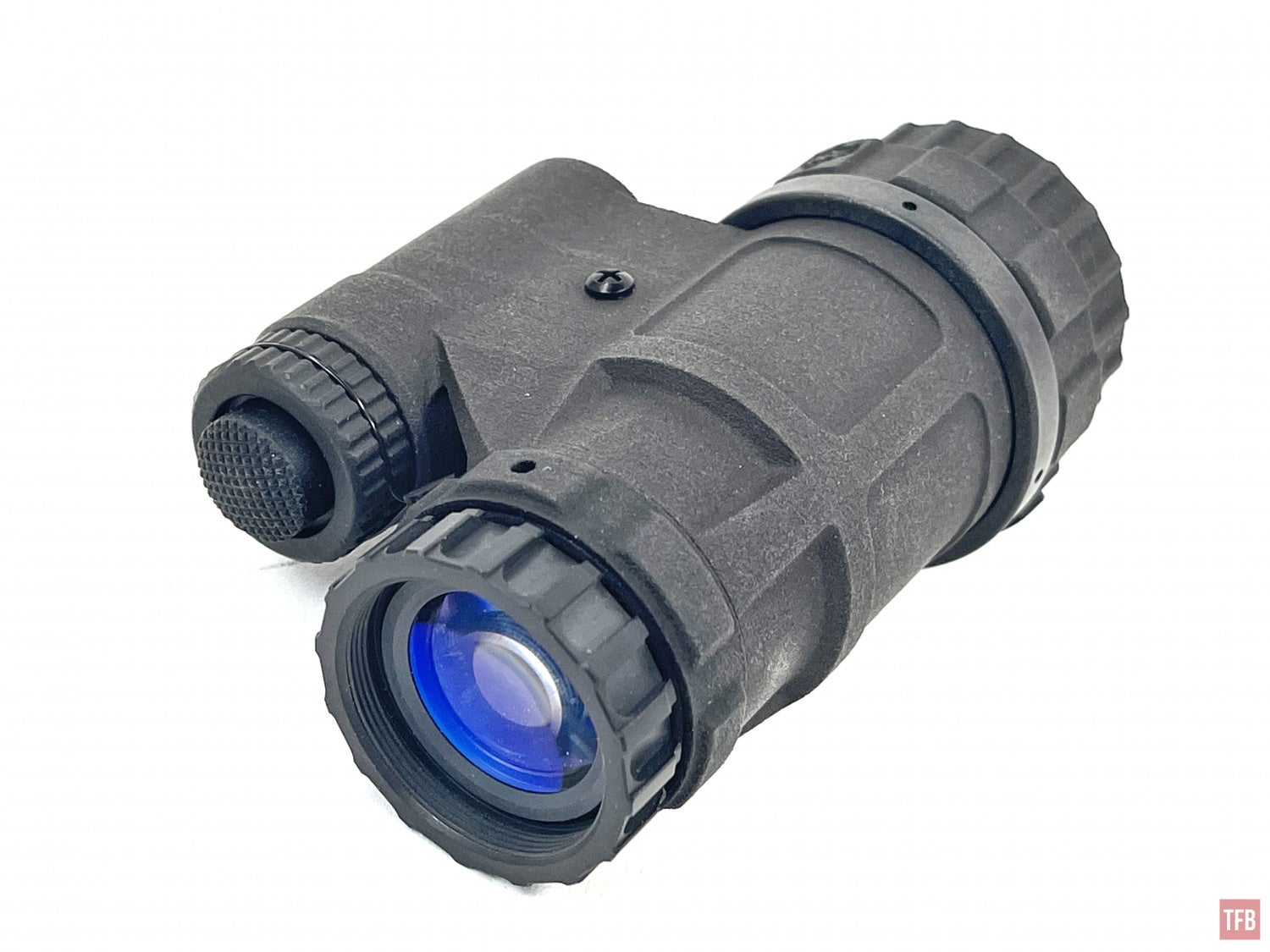
If you recall, Nocturn Industries came out with their dual-tube bino housing. The UANVB, also known as the Katana, has been a commercial success. It offers night vision enthusiasts an affordable articulating housing with integrated pupillary distance stops while being lighter weight than most fixed bino housings. Well, Jeffrey of Nocturn has been keeping his monocular design under wraps until now. The Tanto is a single tube monocular. Just like the Katana, the Tanto is 3D printed by the same Multi Jet Fusion technology. It is not your standard desktop home FDM 3D prints. The Tanto is almost like a standalone Katana monocular pod with an integrated power supply. For the sake of simplicity, the Tanto uses the same battery cap as the Katana. It is a standard constant-on clicky battery cap.
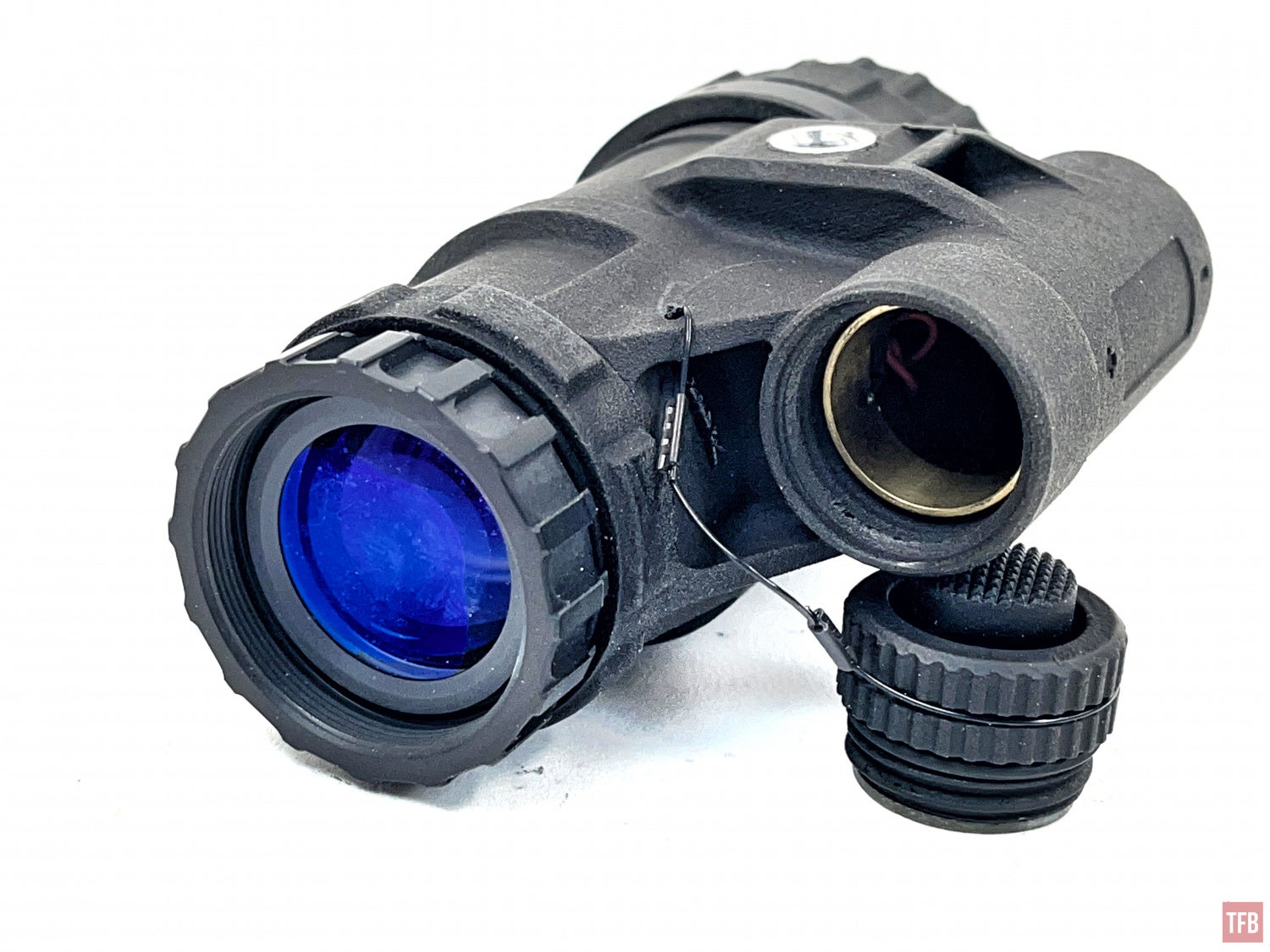
On one side you have the J-Arm threaded hole and anti-rotation pocket. On the other side, you have the purge screw. Take a look at the back of the battery compartment. There is a cylindrical protrusion. I will explain that a little later in this article.
Nocturn Industries is also printing their own infinity focus stop rings. You can see it sitting just behind the objective lens.
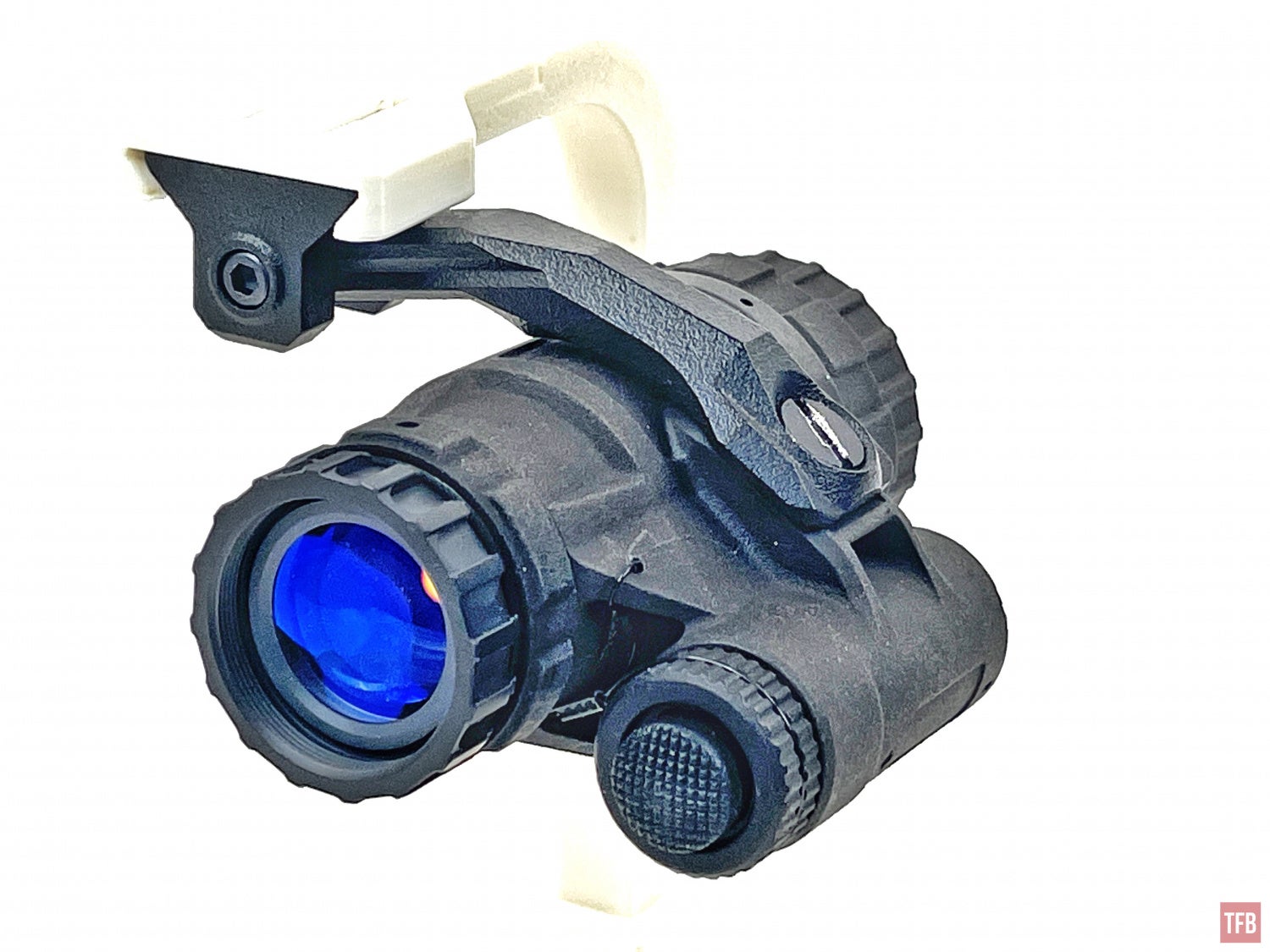

For those of you paying close attention, you might have noticed the eyepiece is also 3D printed. Nocturn will be offering up their own diopter housings in the future. This is to simplify supply chain issues. Also, it reduces the weight of your ocular lens assembly.


The Nocturn eyepiece diopter housing weighs just 10 grams

A standard Carson diopter housing weighs 6 more grams than the Nocturn eyepiece.
To help reduce weight, I used an RPO lightweight eyepiece in the Nocturn diopter housing.

With the Nocturn diopter housing and RPO lightweight lenses, a fully built Tanto, with battery, weighs just 7.8 ounces. If you recall in my Saving Weight With Night Vision article a PVS-14 with all the weight-saving modifications weighed 9.4 ounces.

Even with Carson lenses, the Tanto is lighter weight than the PVS-14 with all the bells and whistles.

With a Noisefighters X-14 arm, a complete Tanto weighs just 8.4 ounces.

There are some compromises though for the lighter weight. The Tanto does not have manual gain adjustment, nor can it accommodate an 11769 tube unless you circumcise the pigtail off. Also, the Tanto does not have any onboard illumination like a PVS-14.
With the X-14 arm, the Tanto is a lightweight yet versatile monocular.



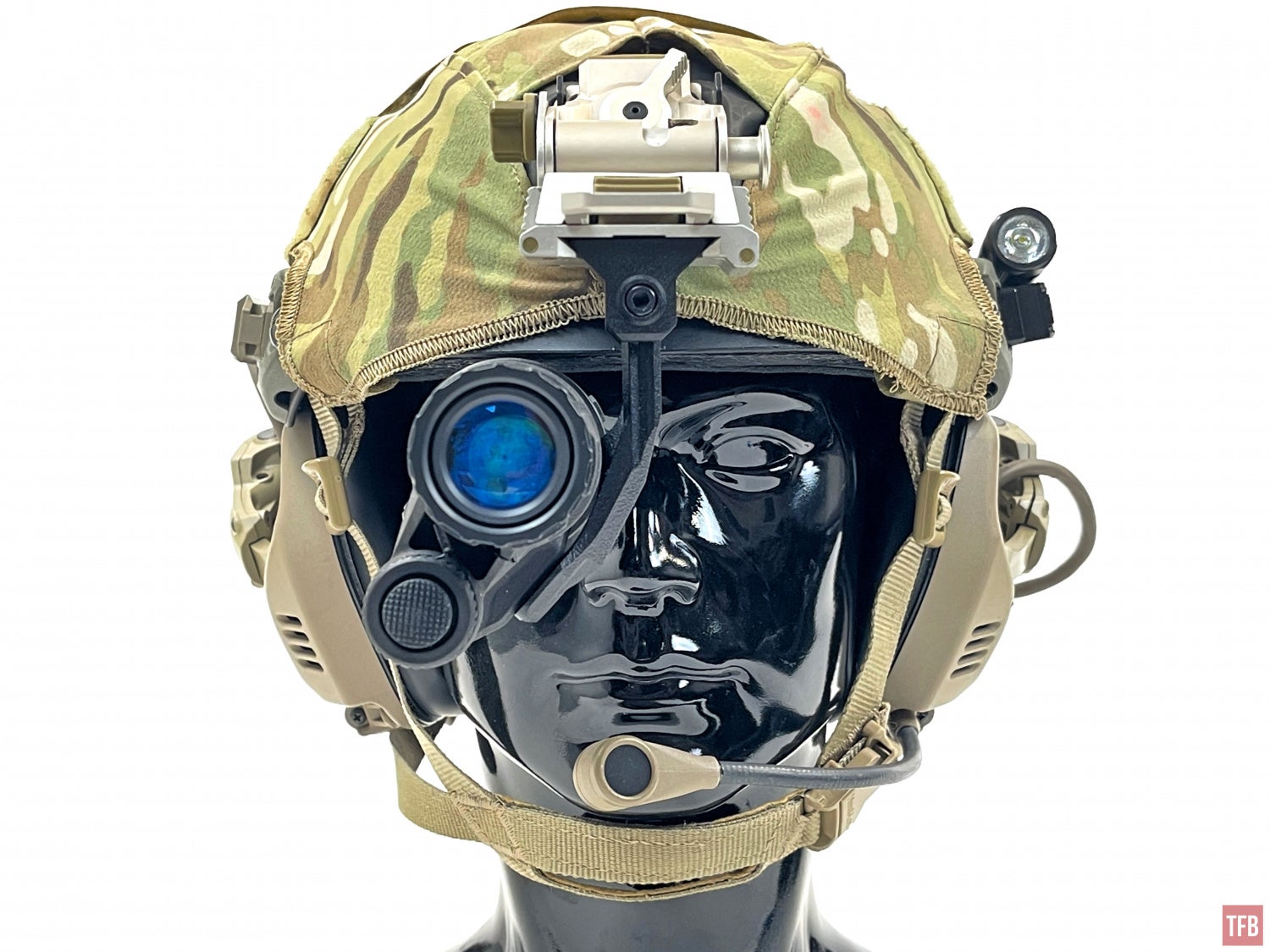
Tantos Akimbo

Some of you have forgone dedicated dual-tube binos for the Noisefighters Panobridge. The Nocturn Tanto is compatible with the Panobridge. With dual Tantos, a complete Panobridge weighs just 17.3 ounces. That is with RPO lightweight lenses and Nocturn’s diopter housings. If you have Carson lenses on both Tantos, a complete Panobridge set will weigh 19.7 ounces.




Remember that cylindrical protrusion at the back of the Tanto battery compartment? It has a function. It is for the articulating bridge Nocturn will be making for the Tanto. The 3D renderings are over a year old but you can get an idea of what Jeffrey has planned.


He is using the battery tube, on the monocular pod, as a hinge point. He is still using the same flange attachment design from the Katana to mount the rear of the pod. The cylindrical protrusion is the rear hinge point for the bino. He is going to call it the Daisho. For those of you who are not Weebs, Daisho is the name given to a pair of Samurai swords. Typically a long and short sword (katana and wakizashi).


Now you can bridge two Tantos for a solid-looking articulating bino. The bridge will have connections to the monocular pod battery compartments to deliver power from the central CR123 power supply. Jeffrey is still developing the Daisho bridge so we shall see how it actually assembles when it comes out. I suspect it will not be a tool-less assembly.
Nocturn Airframe M-LOK Rails

Something new for Nocturn Industries is their Crye Airframe M-LOK rail upgrade kit. For those not familiar with the Crye Precision Airframe helmet, it is a two-piece ballistic shell. Sort of like an Armadillo or Rolly Polly, the forward shell sits over the rear panel. This allows for a more complex geometry for the helmet while maintaining ballistic coverage. Well, Ops-Core manufactures the side rails for the Airframe but it lacks rear attachment rails like the Ops-Core SF Fast helmets.

With the onset of the Ops-Core AMP headset helmet adapters, everyone is adapting ear pro to those arms. So now you need a way to attach them to a helmet that does not have standard ARC rails. Unity Tactical makes M-LOK adapters to mount AMP helmet arms onto MTEK FLUX helmets. The rails on the Flux helmets have a vertical M-LOK slot at the rear of the rail. So Nocturn made a similar design for the Crye Airframe.


You can use the Unity Tactical M-LOK adapter for AMP arms.

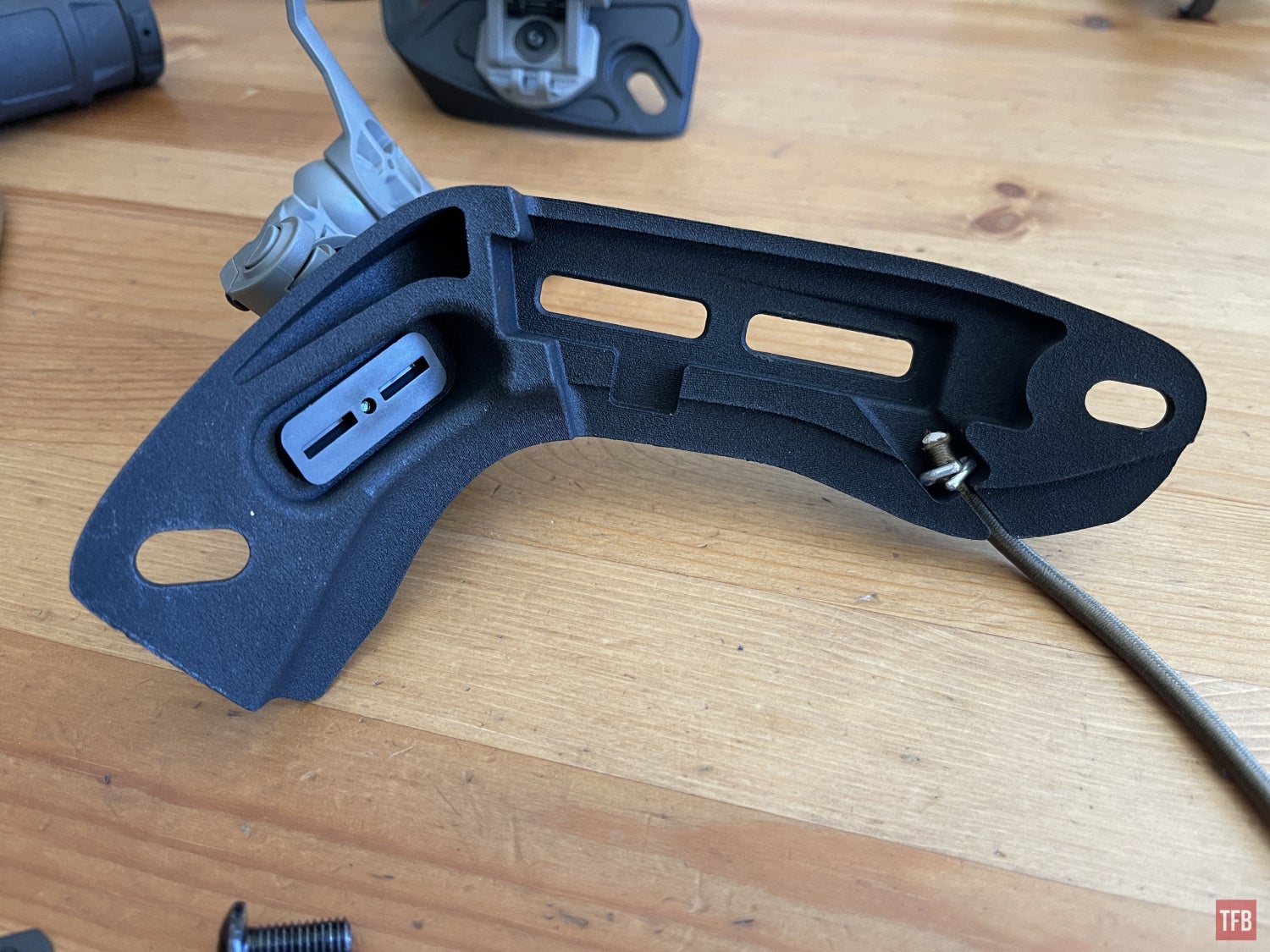



There are two M-LOK slots to attach lights and other accessories to the side of the Airframe M-LOK rail.

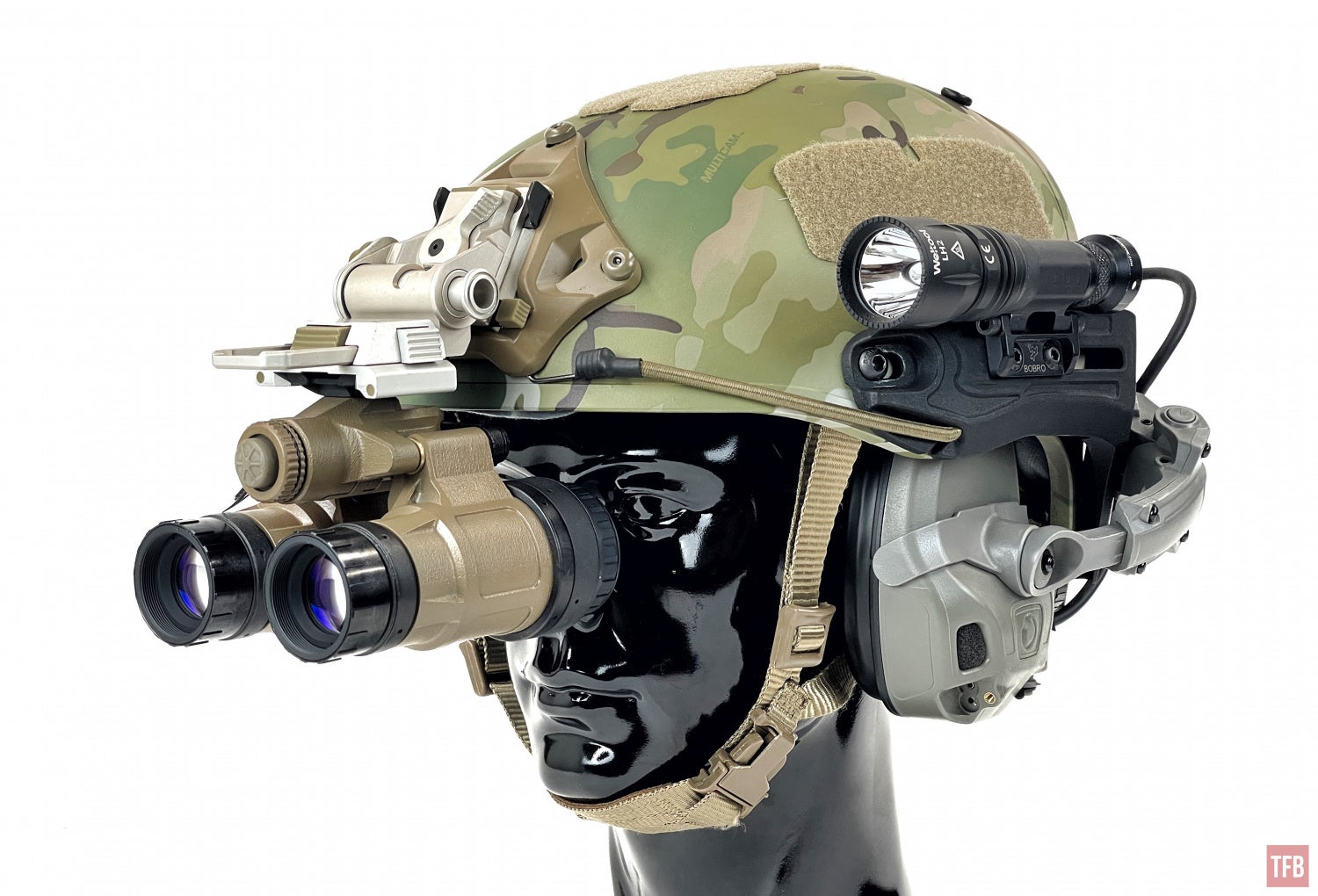

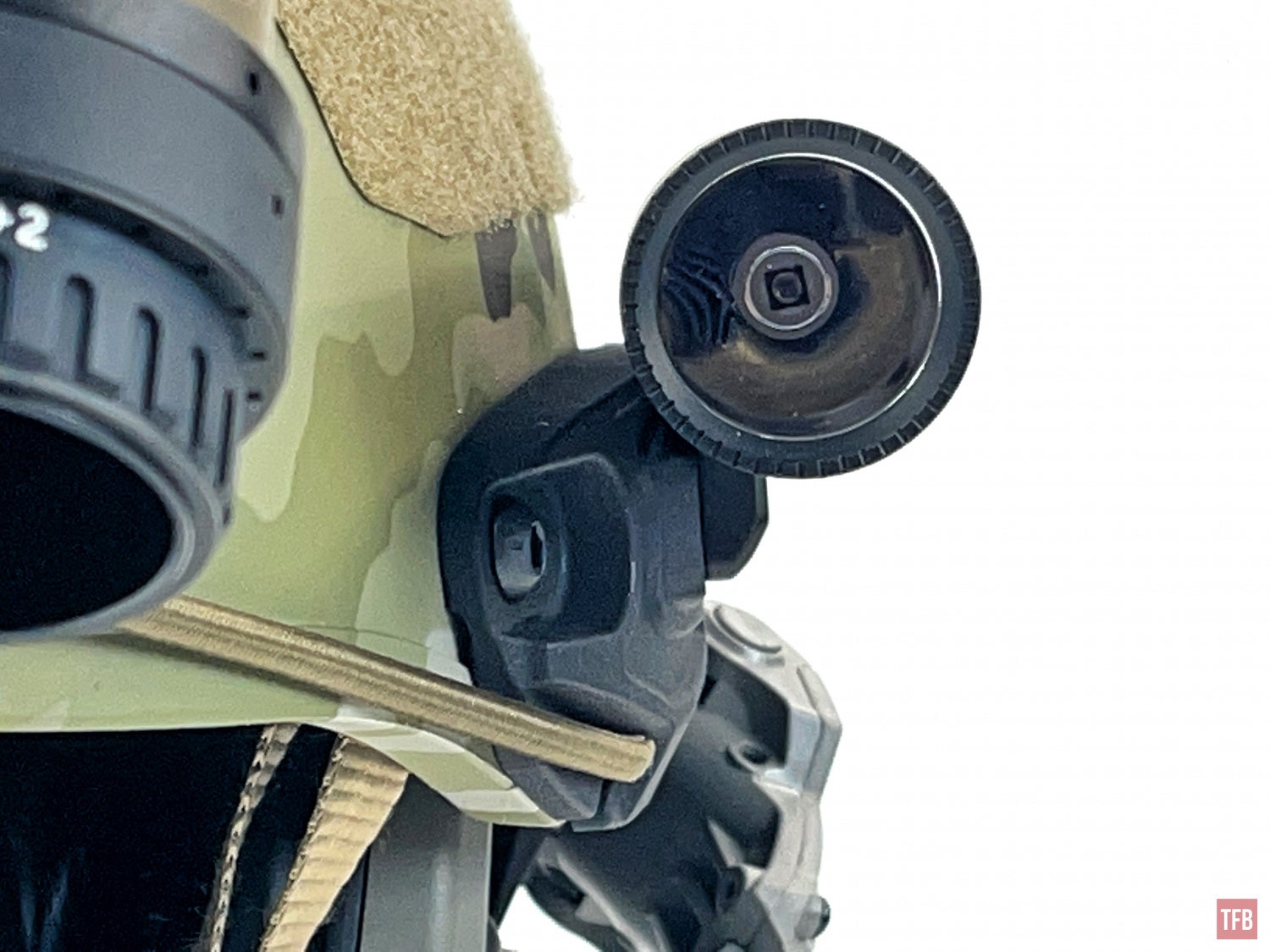


I did not have a real Crye Airframe helmet at the time so I used an airsoft replica. The replica rails are a little bit on the thin side. The Nocturn Airframe M-LOK rails are thicker and the factory screws were too short. I went to my local Ace Hardware and bought longer screws so I could attach the MLOK rails to the replica helmet.

I told Jeffrey that he should consider modifying his Airframe rail design. There is a lot of material on the rail. I think he could fit two rows or M-LOK slots. If you look at the photos above with the light attached to the side rail, I used a Valhalla Tactical articulating light body. If the M-LOK slot was higher up the rail, the light body could roll over the top off the rail and sit closer to the helmet.

Nocturn Wrap Up
The Tanto looks to be a great alternative to a PVS-14 especially if you do not need manual gain or an onboard illuminator. Pricing is not decided yet but Nocturn is hoping to sell them for under $500. That is just for the housing. You will still need to source an objective and ocular lens. With lenses, a Tanto kit will cost more than a standard Carson PVS-14 kit. However, the real cost depends on the image intensifier. I am looking forward to checking out the Daisho bridge whenever they release it.
With regard to the Airframe rails, they are available now for $129. They come in black or matte Coyote Cerakote. They are only really useful if you use the AMP arms to attach ear pro to the back of the rails. I noticed a little bit of flex with the Nocturn rails but I am not sure if that is due to using a replica helmet or the material. It is not a major concern since you are only attaching ear pro and lights on these rails. The AMP arms have plenty of tension that the flex is negated. No concerns of the ear pro breaking seal from your ear. For more information go to Nocturn’s website.
TFB’s Friday Night Lights series is brought to you by ATN
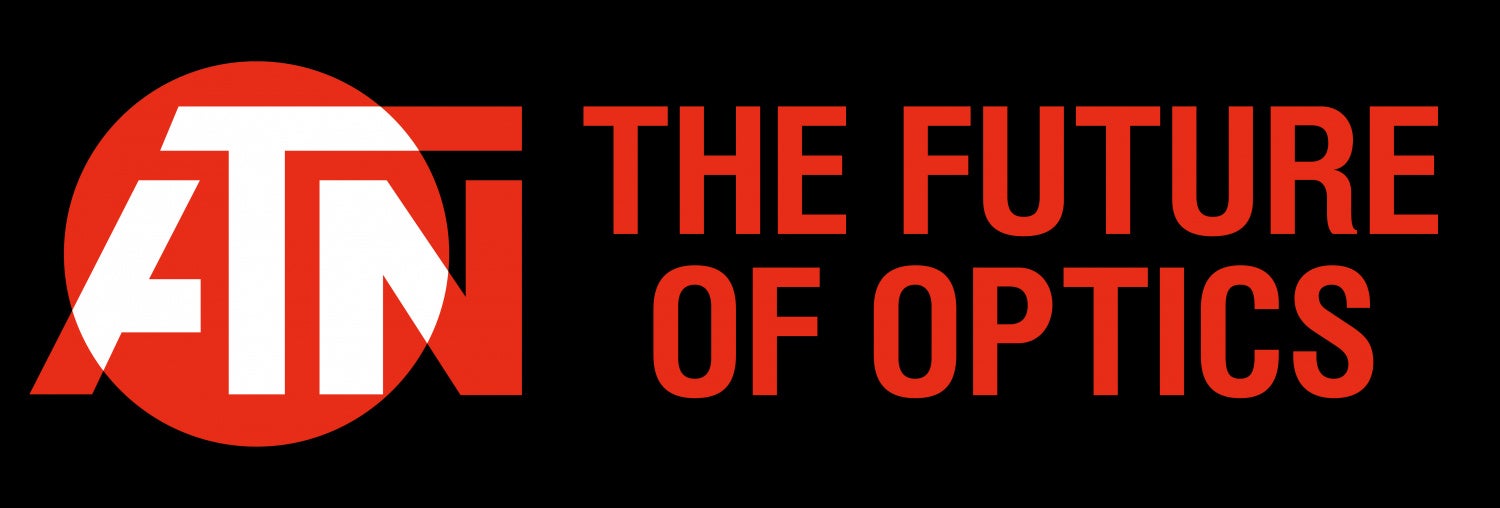
 Your Privacy Choices
Your Privacy Choices
